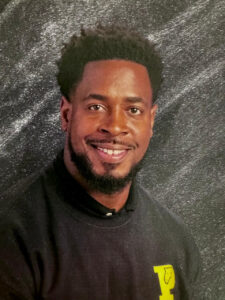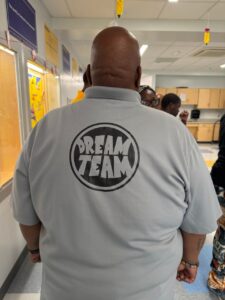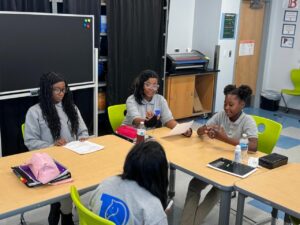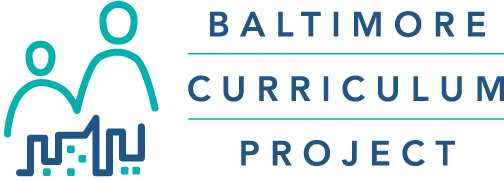Restorative Practices is the cornerstone of each neighborhood conversion charter school in the Baltimore Curriculum Project (BCP) network of six Baltimore schools. The focus on and devotion to daily practices of using positive, community-building interactions for discipline, student expectations, and conflict resolution has transformed BCP school culture and community.
Now in its fourth year as a BCP school, Pimlico Elementary / Middle School (PEMS) is using Restorative Practices to impressive success. The “Dream Team,” a collaborative group of expert Restorative Practices practitioners, oversees PEMS’s Restorative Practices program (see end for names).
Marc Lester
Q: What does Restorative Practices look like at PEMS?
A: Teachers and staff use proactive circles (morning meetings, check-in, and check-outs) to build trust, respect, and belonging. Students also share thoughts, feelings, and experiences in structured, supportive conversations. Classroom norms are created collaboratively to encourage accountability and voice.
 Instead of focusing on punishment, students are guided to understand the impact of their actions. Staff use restorative conversations or problem-solving circles to allow all parties to share their perspectives. Consequences are linked to repairing relationships, not just discipline. Students also learn empathy, active listening, and conflict resolution.
Instead of focusing on punishment, students are guided to understand the impact of their actions. Staff use restorative conversations or problem-solving circles to allow all parties to share their perspectives. Consequences are linked to repairing relationships, not just discipline. Students also learn empathy, active listening, and conflict resolution.
Q: What has been the impact of your program for the past four years since PEMS joined BCP?
A: Over the past four years, the Dream Team has had a significant impact on strengthening school culture and improving student outcomes. Through consistent use of Restorative Practices, proactive community building circles, and collaborative staff support, the Dream Team has helped reduce conflicts, improve student behavior, and increase engagement.
Relationships between students, staff, and families have become more positive and solutions, which have led to a more inclusive and respectful environment. The Dream Team has also provided professional development and coaching for staff, ensuring that restorative approaches are embedded into daily practices and sustained across the school.
Watch a video of how Restorative Practices works at BCP schools.
Q: How does PEMS’ Peer Mediators support the Dream Team and the PEMS culture?
 A: We have 15 trained Peer Mediators. The program has had a measurable impact on improving student interactions and reducing conflicts. The student mediators help their peers navigate disagreements before they escalate, fostering a culture of accountability, empathy, and communication.
A: We have 15 trained Peer Mediators. The program has had a measurable impact on improving student interactions and reducing conflicts. The student mediators help their peers navigate disagreements before they escalate, fostering a culture of accountability, empathy, and communication.
As a result, incidents of minor conflicts have decreased, students feel more empowered to solve problems constructively, and overall school climate has become more positive. The program also develops leadership and social-emotional skills among the mediators themselves, preparing them to model Restorative Practices for the broader student community. The Dream Team also wants to shout out Todd Wade, Restorative Practice Director at City Springs Elementary / Middle School for spearheading our peer mediation initiative.
Read more about the Peer Mediator program, which began three years ago across all BCP schools.
Q: What do you find inspiring about this work?
Members of the PEMS Dream Team; Mr. Lester, back row, center, in white shirt.
Thank you, PEMS Dream Team!
Mr. Lester, Restorative Practice Director (Lead of Climate)
Mr. Davis, Student Wholeness Specialist
Mr. Reid, Student Wholeness Specialist
Mr. Lymon, Restorative Practices Coach (6th-7th grade Lead)
Mr. Taylor, Student Wholeness Specialist( Elementary Lead)
Ms. Carter, Ed Associate
Mr. Adams, Restorative Practices Coach (8th grade Lead)
Ms. Hopkins, Student Support Staff
Mr. Hicks, Student Support Staff
Ms. R., Student Support Staff
Mr. Bell, Student Support Staff
Mr. Carter, Student Support Staff
Mrs. Well, Student Support Staff
Mr. Scott, Student Support Staff
Mr. Noel, Student Support Staff
Mr. Brown, Student Support Staff
Ms. Dodson, Student Support Staff
